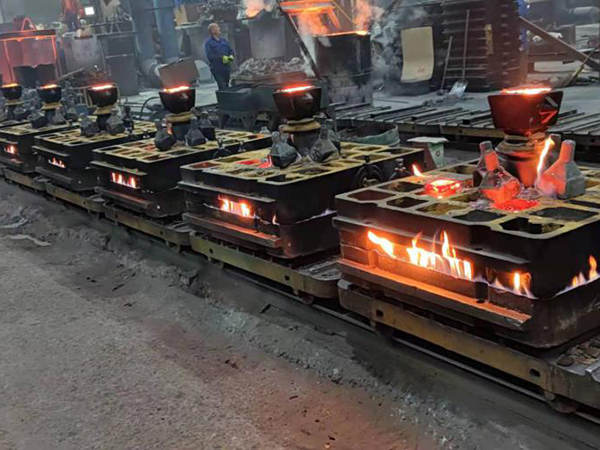Open Sand Casting An Essential Foundry Technique
Open sand casting is a traditional and widely utilized metal casting process that involves pouring molten metal into a sand mold. This method has been a cornerstone of metalworking for centuries, playing an integral role in various industries, from automotive to aerospace. Its simplicity, cost-effectiveness, and versatility make it a preferred choice for producing complex shapes and large components.
The Basics of Open Sand Casting
The open sand casting process begins with the creation of a mold, which consists primarily of sand. This sand is often mixed with a binding agent, such as clay or resin, to help it retain its shape when compacted. The mold is typically made in two halves, known as the cope and drag, which are assembled to form a complete cavity into which the molten metal will be poured.
The first step in the process is to prepare the mold. The sand mixture is packed tightly around a pattern, which is an exact replica of the desired final product. The pattern can be made of various materials, including metal, plastic, or wood, depending on the requirements of the casting. Once the pattern is removed, the two halves of the mold are joined together, and any necessary cores are added to create internal features.
After the mold is prepared, it is ready for the molten metal. The metal is heated in a furnace until it reaches its melting point. Common materials used in open sand casting include aluminum, brass, bronze, and various steel alloys. The choice of material depends on the specific properties required for the final product, such as strength, corrosion resistance, and weight.
Once the metal is molten, it is poured into the cavity of the mold through a runner system, allowing it to flow and fill all areas. After the casting has cooled and solidified, the mold is broken away to reveal the finished product. This process can produce a wide range of components, from simple blocks to intricate designs used in machines and engines.
Advantages of Open Sand Casting
open sand casting

One of the primary advantages of open sand casting is its cost-effectiveness. The materials used for the mold, primarily sand, are inexpensive and readily available. This makes it an attractive option for producing large quantities of parts or for creating one-off prototypes. Additionally, the process has a relatively low setup cost compared to other casting methods, making it accessible for small foundries and hobbyists alike.
Another benefit is the flexibility of design. Open sand casting can accommodate various sizes and shapes, from small components to large, complex structures. The ability to easily modify patterns allows for quick adjustments during production, enabling manufacturers to respond to changes in design specifications efficiently.
Moreover, the sand mold can be reused multiple times, minimizing waste and further enhancing the cost-effectiveness of the process. While the quality of the mold may degrade over time, with proper maintenance, foundries can achieve high production rates without compromising on the integrity of the castings.
Challenges and Considerations
Despite its advantages, open sand casting does have some challenges. One significant issue is the potential for defects such as air pockets or inclusions, which can affect the strength and quality of the final product. To mitigate these risks, foundries must adhere to strict quality control measures and implement best practices during the pouring and cooling processes.
Environmental considerations are also becoming increasingly relevant. The foundry industry is known for its energy consumption and emissions, prompting a shift towards more sustainable practices. Innovations in sand recycling technologies and the use of greener binding materials are helping to reduce the environmental footprint of open sand casting.
Conclusion
Open sand casting remains a vital method in the metalworking industry, known for its affordability and versatility. While challenges exist, advancements in technology and environmental practices continue to enhance its viability. As industries evolve and new materials and techniques emerge, open sand casting is likely to adapt and thrive, maintaining its significance in the world of manufacturing. Whether producing everyday components or specialized parts, the open sand casting process will continue to play an essential role in fulfilling the growing demands of modern engineering.
Post time:ਦਸੰ. . 25, 2024 05:50
Next:how to sand a 3d print
